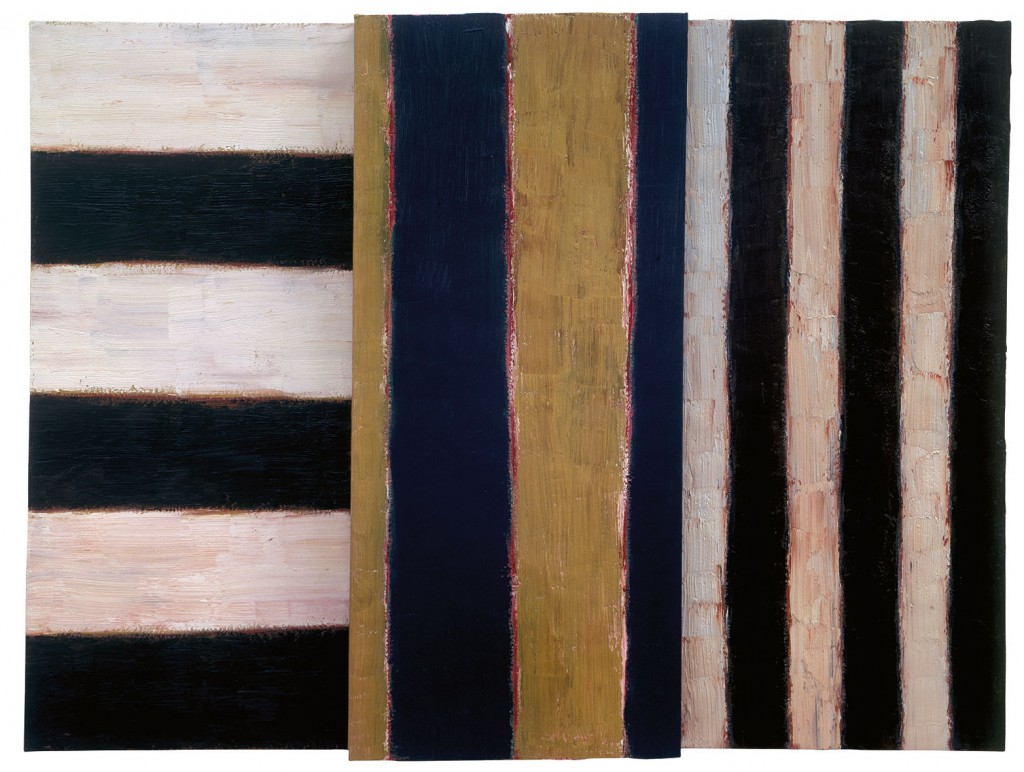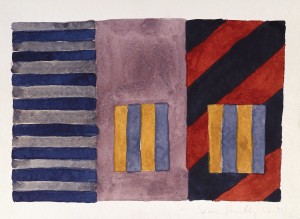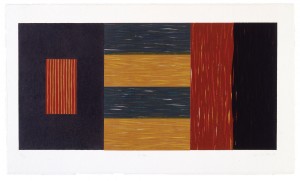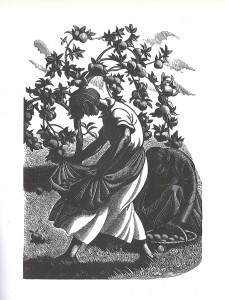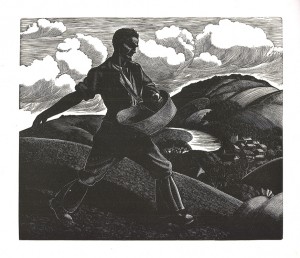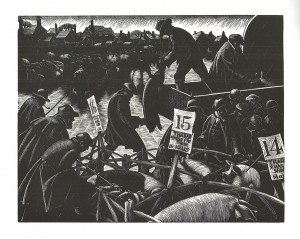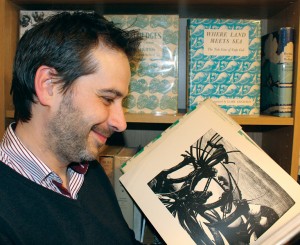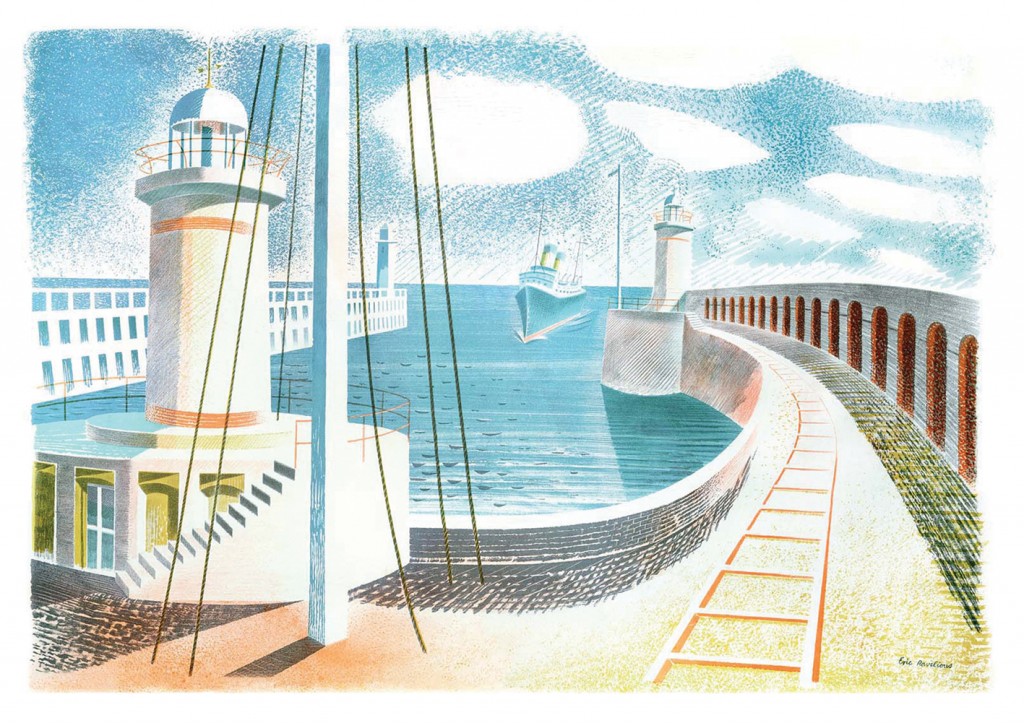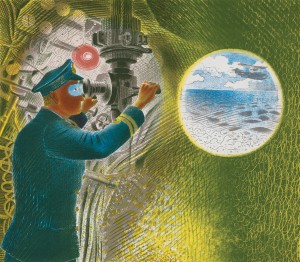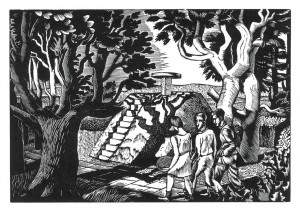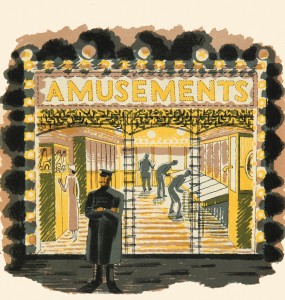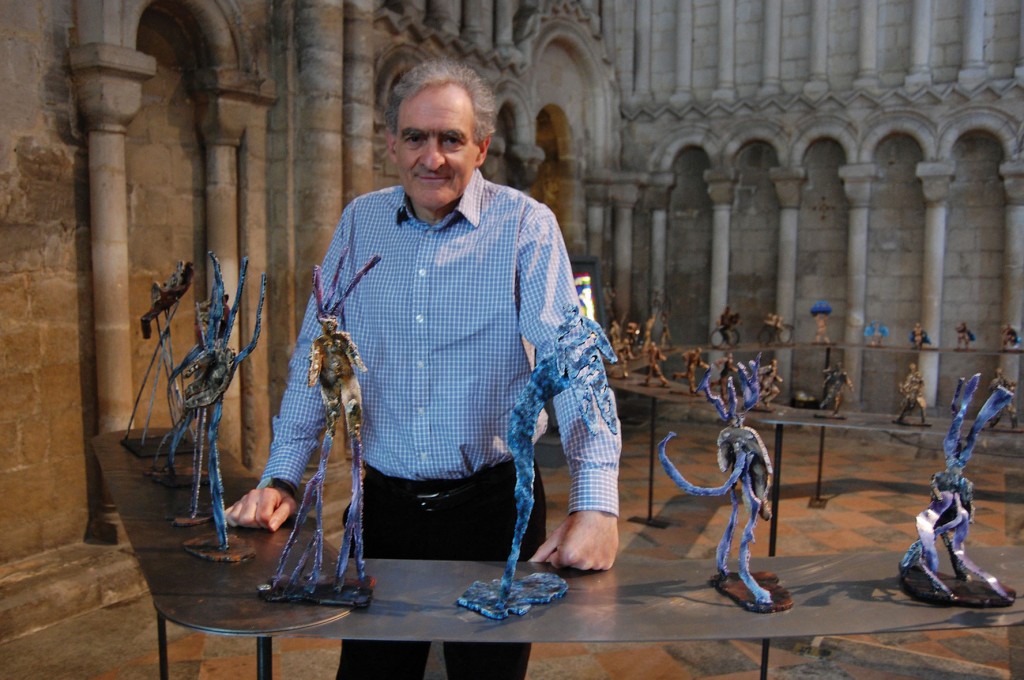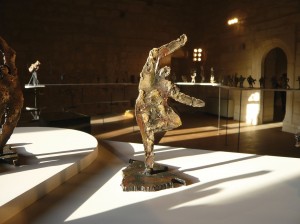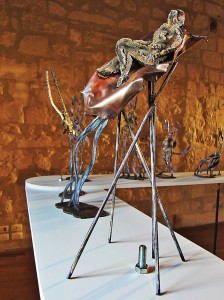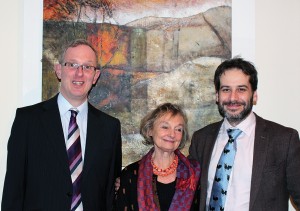
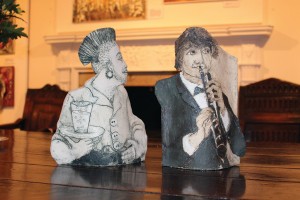
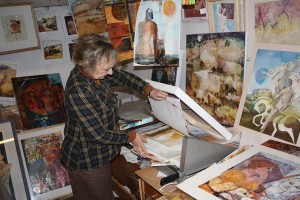
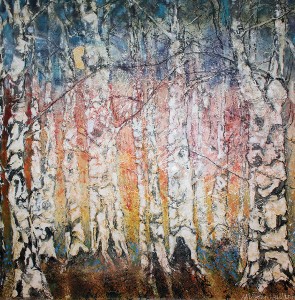
This week I am back at Horsham Museum & Art Gallery with my brother, Nick Toovey, for the opening of a new art show, which celebrates the work of Washington-based artist Alison Milner-Gulland. This selling exhibition runs until 29th March 2014.
Nick has long championed the work of Sussex artists. His self-representing contemporary art auctions were the first of their kind ever to be held in the UK. “They were groundbreaking,” Nick enthuses. “Artists entered their own work into the auctions and I made sure that the successful sales were picked up by the leading international fine art indices. This helps to establish an artist’s long-term credibility, giving art collectors confidence to buy, not just at my auctions but at exhibitions and galleries as well.”
I ask Nick about Alison’s work. “I love how Sussex has inspired her palette and subject matter,” he replies. “At first glance her work is accessible and uncomplicated, but over time the work reveals layers, subtle details and evolving depths, highlighting her talent. It is often infused with classical, mythical or natural inspiration.”
From her teens until only a few years ago Alison regularly rode on the South Downs, committing to memory the play of light and the elements on the landscape with the movement of her horse. The elevated perspective that riding affords is evident in many of her landscapes. Through her eyes we see the sweeping chalk curves, ancient tracks, rolling hills and far-reaching views of the Downs. Later, in her studio, she would transfer these thoughts and images to paper and canvas. The ancient quality of the South Downs is perfectly captured in ‘Deep in the Downs’, shown here with exhibition curator Jeremy Knight, Alison and Nick.
Alison’s studio nestles at the foot of the South Downs in the small village of Washington. Nick describes what the visitor encounters: “It is an amazing space – well-organised chaos! Framed works are hung wherever wall-space permits or stacked on the floor. After being greeted by the family’s Jack Russell terrier and navigating a maze of pictures, mounting materials and packaging, you come to the main work area of the cottage studio. Here an architect’s chest conceals numerous unframed prints; stacked on top of this are further prints, oils on canvas and works in progress beneath works drying on a washing line. Occasionally the sound of nearby chickens, geese, guinea fowl or sheep are heard from outside. Negotiating the livestock and braving the elements, you come to a separate studio, dedicated to Alison’s work in ceramics. This is a colder but brighter and neater space, inherently slightly dusty from the powders, glazes and clays used to create the work. Along two walls are shelves displaying recent vessels, the majority figurative or inspired by music with a few trial abstract landscape designs scattered amongst them.”
Alison’s ceramics give expression to her creative voice. The two slab vases illustrated capture the musician and the waiter with a Mohican hairstyle wonderfully. “I felt moved to draw the waiter in the restaurant,” Alison says. “He had a particular confidence, which caught my attention, and that marvellous hair. I hadn’t got anything to draw on, so I sketched on a napkin held under the table!” Unsurprisingly, they were amongst the first pieces to sell at the exhibition.
Russia has provided a rich seam of inspiration and the landscape depicting a silver birch wood has grown out of this. “My paintings develop and evolve as I continue to work on them until they are sold,” Alison explains. This perhaps, in part, explains the layers and depths which Nick describes, but it is also the depth of connectedness with the world around her which gives her a particular and distinctive artistic voice.
Toovey’s are delighted to be sponsoring this exhibition, aptly titled ‘Alison Milner-Gulland: Constantly Updating’, and the works are selling well. Jeremy Knight and his team are once again deserving of our thanks for an excellent show of work from this insightful Sussex artist.
Nicholas Toovey is always pleased to advise and share his passion for contemporary artists, especially from Sussex. He can be contacted at Toovey’s.
By Revd. Rupert Toovey. Originally published on 19th February 2014 in the West Sussex Gazette.
